We depart Gondar today on an early morning flight bound for Lalibella. Lalibella’s fame is based on the 13 monolithic, hand carved churches that were commissioned by King Lalibella in the 12th Century. Eleven of the 13 are in a stone’s throw of each other near the center of the town.
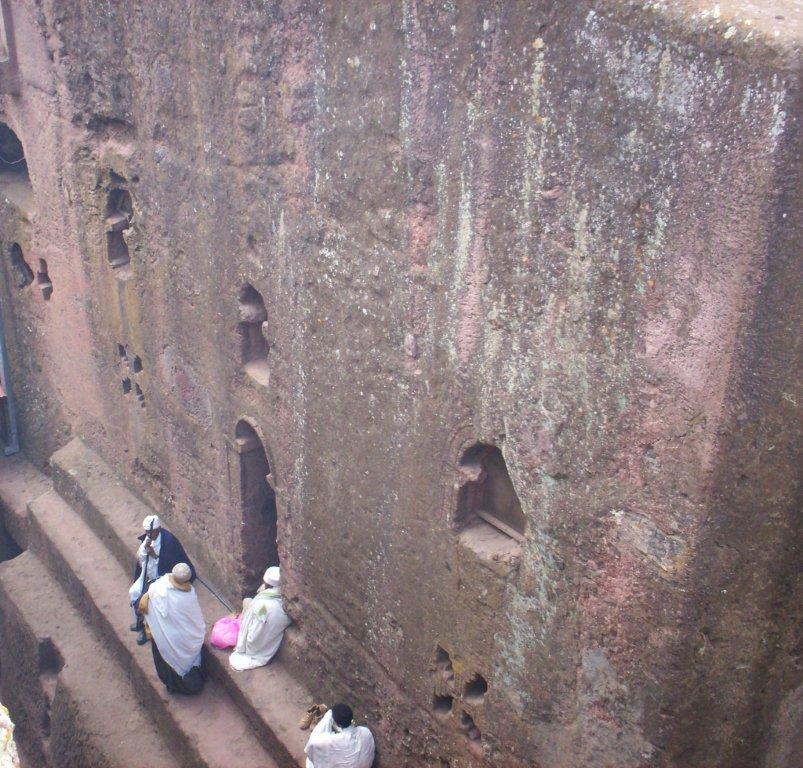
The churches are truly a marvel. They are hand carved out the granite mountain, and each church is free standing. In each case, roofs, columns, arches, floors and decorative carving are all from one piece of granite. Legend says that King Lalibella constructed the churches over a 26 year period, using 40,000 workers. The King created the churches as a “New Jerusalem” pilgrimage location for members of the Ethiopian Orthodox Church who could not afford the time or money to travel to Jerusalem on their pilgrimage. All of the churches are staffed by priests and are in use today.
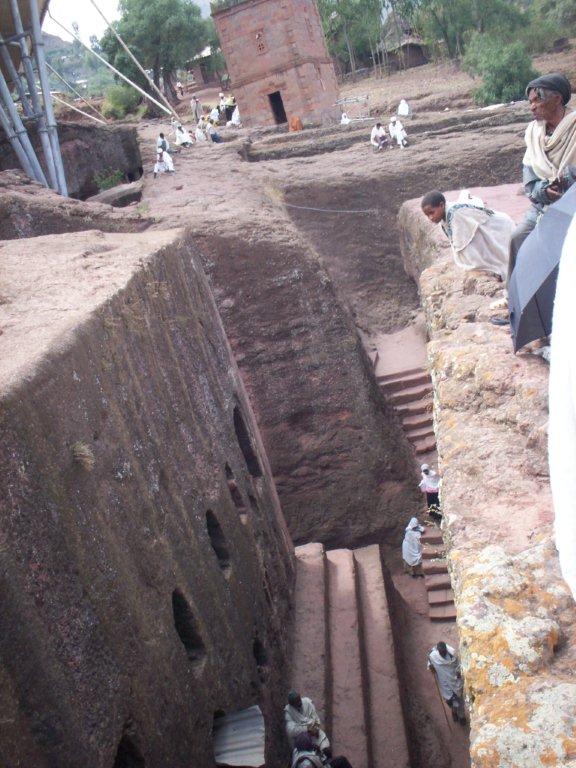
Since the churches are located close to one another, they are inter-connected by an intricate set of pathways and tunnels, many of which are narrow and steep. Since all the churches were created below ground level, you would expect major drainage issues at the sites during the downpours of the rainy season. But this is the other engineering marvel of these sites. They are interconnected with a water drainage and diversion system that quickly handles the water and keeps the churches from flooding.
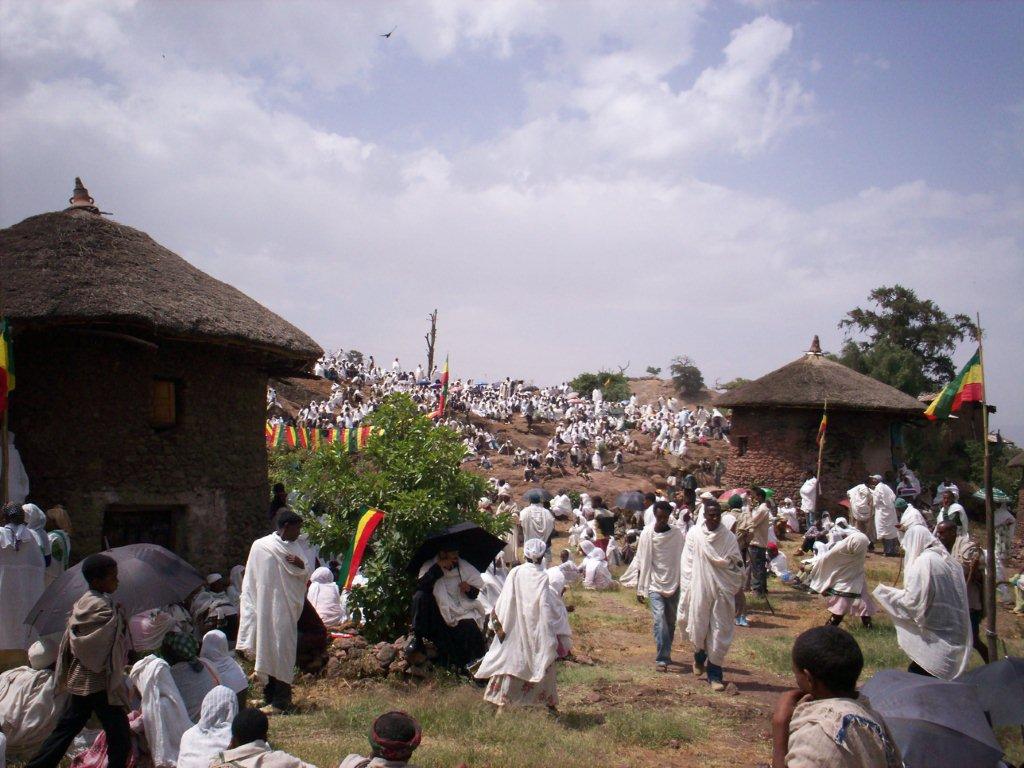
As we drew near to the city on the 25 kilometer winding road from the airport, we immediately noticed the thousands of Ethiopian Orthodox Christian worshipers, dressed in white, making their way toward Lalibella’s churches. We learned from Alem, our tour manager, that today, June 19th, is an important festival day in Lalibella, celebrating the St. Michael’s and St. Lalibella’s Festival. The festival is celebrated by the priests in all of the city’s churches, and will last most of the day.
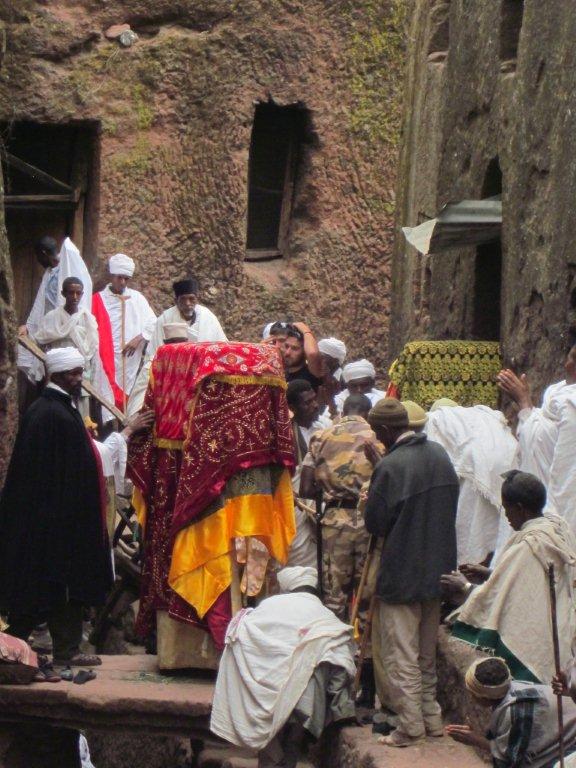
As the celebration and festival continues, this is one of the rare occasions when the High Priests remove the replica of the Ark of the Covenant and carry it through the crowd for everyone to see. It is carefully completely covered with a cloth, because, by Old Testament tradition, no one is suppose to look directly upon the Ark. Our group was close by when one of the priests was carrying the Ark back to the Holy of Holies of the monastery after he had carried it outside for the worshipers to see. In the picture above, the replica of the Ark is underneath the red cover.
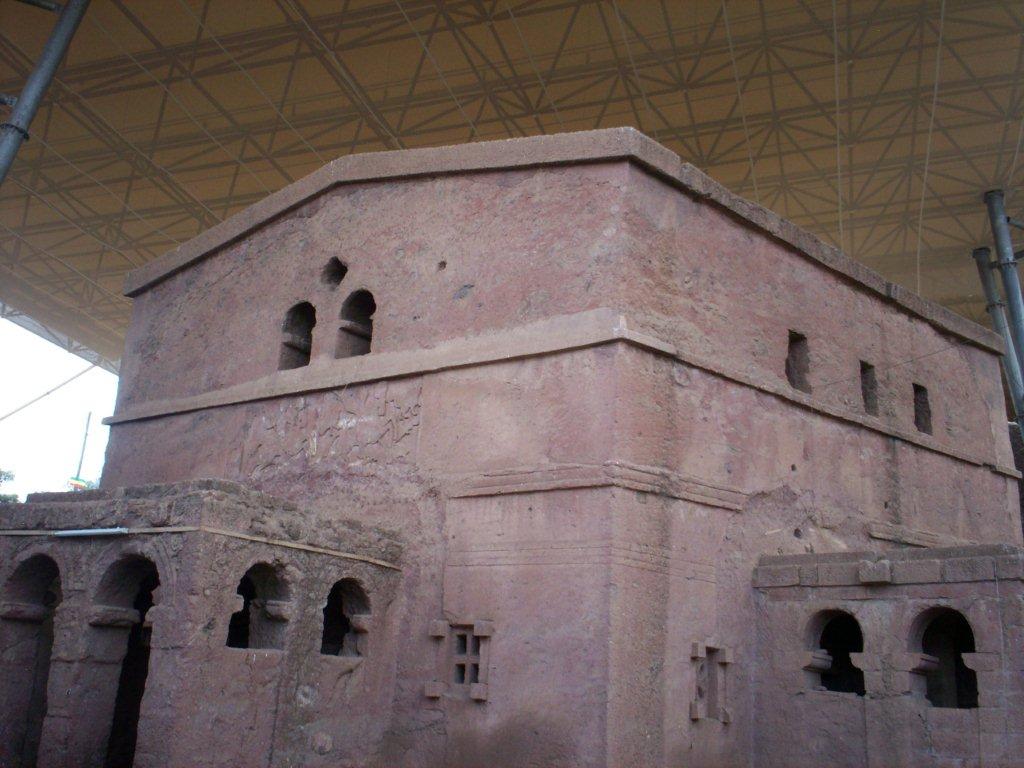
Denoting the importance to Christianity and Ethiopian culture, the churches at Lalibella have been designated as a UNESCO World Heritage Site in order to improve the preservation of this precious asset. UNESCO and the European Community have organized an international competition to build temporary shelters (seen in the picture above) to protect the churches from the rain and further erosion. Restoration of some of the churches has begun and more will be done as budgets permit.
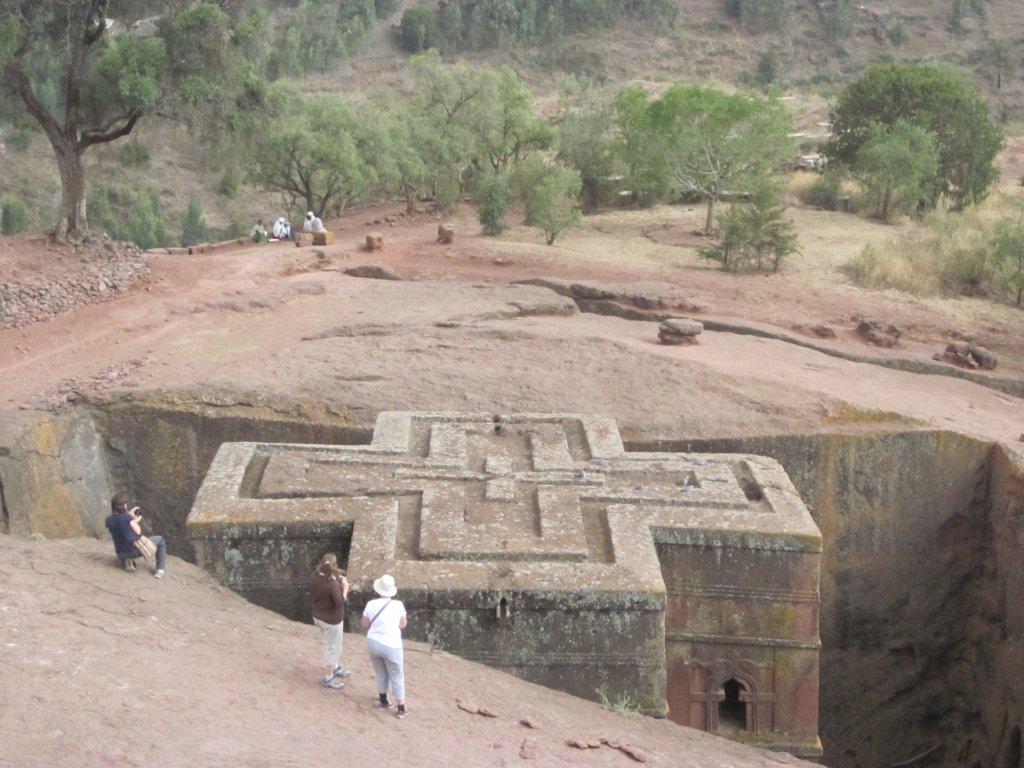
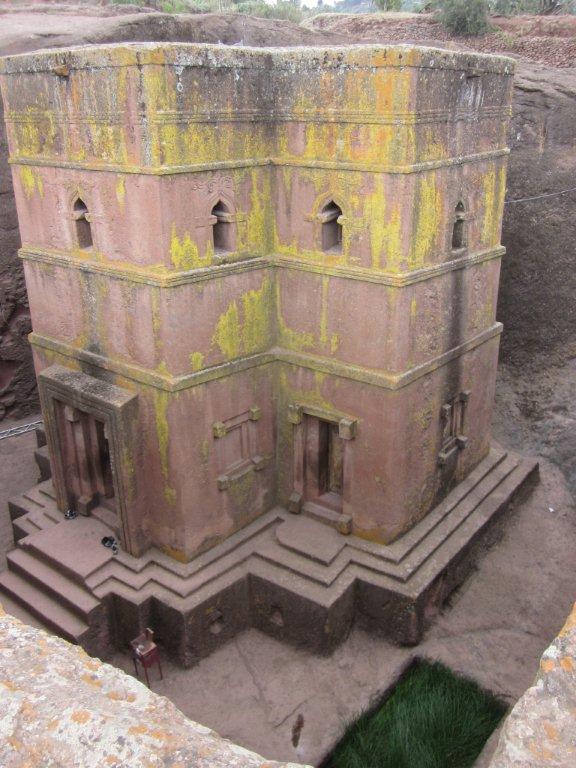
One of the most visited and photographed churches among the group is St. George’s, shown in the two pictures above. At this church, you get a great perspective on the work of the stone cutters. You approach it from the top, so you see the outline of the church (a cross). The church is contained in the center of 75 feet by 75 feet hole. You descend about 90 feet to enter the church at the bottom of the monastery. Although hard to see in the picture, the church is slightly smaller at the top than at the bottom, so as to create the loads to allow the columns inside the church to support it completely.
What a wonderful opportunity it was for our group to witness some of the culture of the local Christian church as wells as see some beautiful treasures of Ethiopia. We definitely felt the presence of God on our journey today.
We depart Gondar today on an early morning flight bound for Lalibella. Lalibella’s fame is based on the 13 monolithic, hand carved churches that were commissioned by King Lalibella in the 12th Century. Eleven of the 13 are in a stone’s throw of each other near the center of the town.

The churches are truly a marvel. They are hand carved out the granite mountain, and each church is free standing. In each case, roofs, columns, arches, floors and decorative carving are all from one piece of granite. Legend says that King Lalibella constructed the churches over a 26 year period, using 40,000 workers. The King created the churches as a “New Jerusalem” pilgrimage location for members of the Ethiopian Orthodox Church who could not afford the time or money to travel to Jerusalem on their pilgrimage. All of the churches are staffed by priests and are in use today.

Since the churches are located close to one another, they are inter-connected by an intricate set of pathways and tunnels, many of which are narrow and steep. Since all the churches were created below ground level, you would expect major drainage issues at the sites during the downpours of the rainy season. But this is the other engineering marvel of these sites. They are interconnected with a water drainage and diversion system that quickly handles the water and keeps the churches from flooding.

As we drew near to the city on the 25 kilometer winding road from the airport, we immediately noticed the thousands of Ethiopian Orthodox Christian worshipers, dressed in white, making their way toward Lalibella’s churches. We learned from Alem, our tour manager, that today, June 19th, is an important festival day in Lalibella, celebrating the St. Michael’s and St. Lalibella’s Festival. The festival is celebrated by the priests in all of the city’s churches, and will last most of the day.

As the celebration and festival continues, this is one of the rare occasions when the High Priests remove the replica of the Ark of the Covenant and carry it through the crowd for everyone to see. It is carefully completely covered with a cloth, because, by Old Testament tradition, no one is suppose to look directly upon the Ark. Our group was close by when one of the priests was carrying the Ark back to the Holy of Holies of the monastery after he had carried it outside for the worshipers to see. In the picture above, the replica of the Ark is underneath the red cover.

Denoting the importance to Christianity and Ethiopian culture, the churches at Lalibella have been designated as a UNESCO World Heritage Site in order to improve the preservation of this precious asset. UNESCO and the European Community have organized an international competition to build temporary shelters (seen in the picture above) to protect the churches from the rain and further erosion. Restoration of some of the churches has begun and more will be done as budgets permit.


One of the most visited and photographed churches among the group is St. George’s, shown in the two pictures above. At this church, you get a great perspective on the work of the stone cutters. You approach it from the top, so you see the outline of the church (a cross). The church is contained in the center of 75 feet by 75 feet hole. You descend about 90 feet to enter the church at the bottom of the monastery. Although hard to see in the picture, the church is slightly smaller at the top than at the bottom, so as to create the loads to allow the columns inside the church to support it completely.
What a wonderful opportunity it was for our group to witness some of the culture of the local Christian church as wells as see some beautiful treasures of Ethiopia. We definitely felt the presence of God on our journey today.

About The Author: Meredith
More posts by Meredith